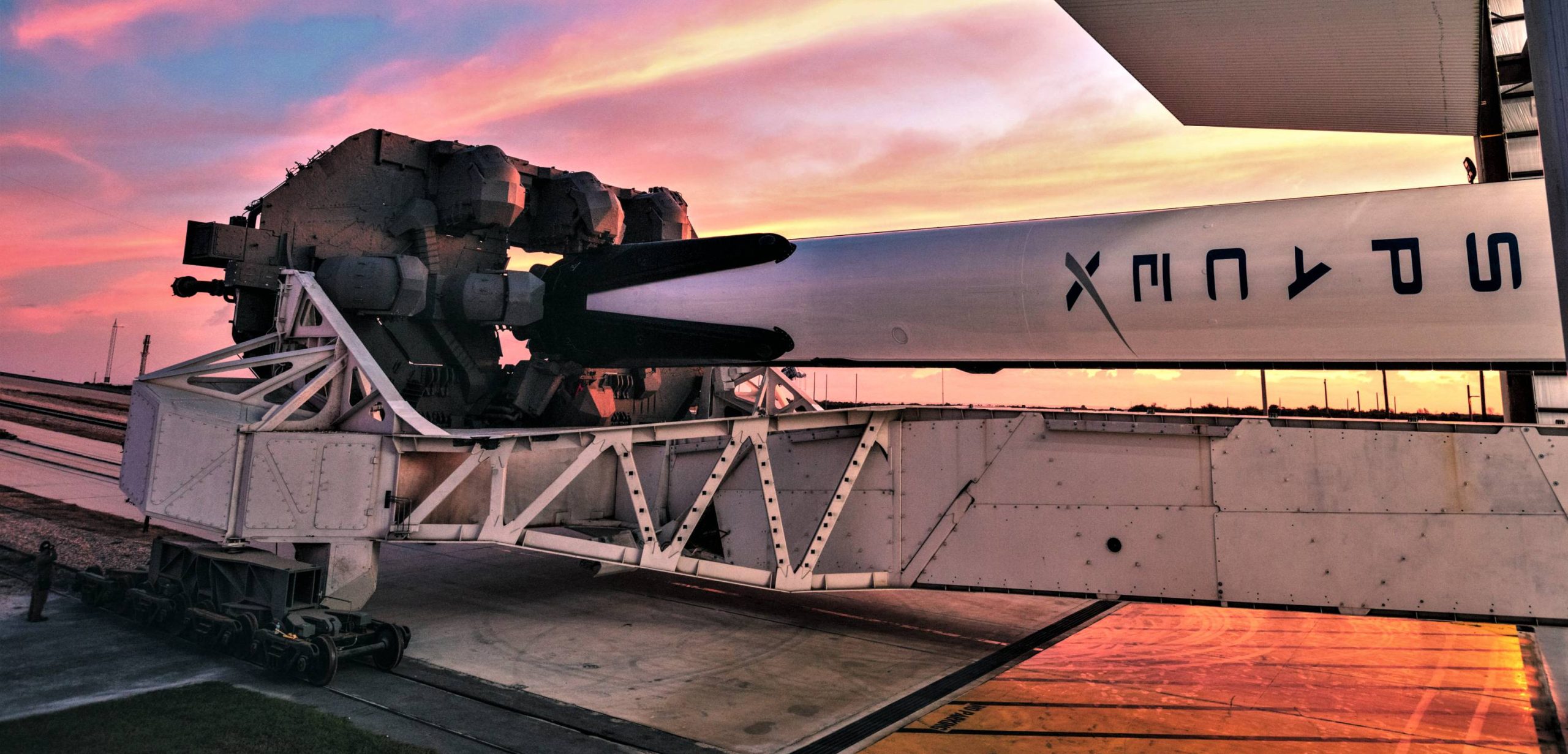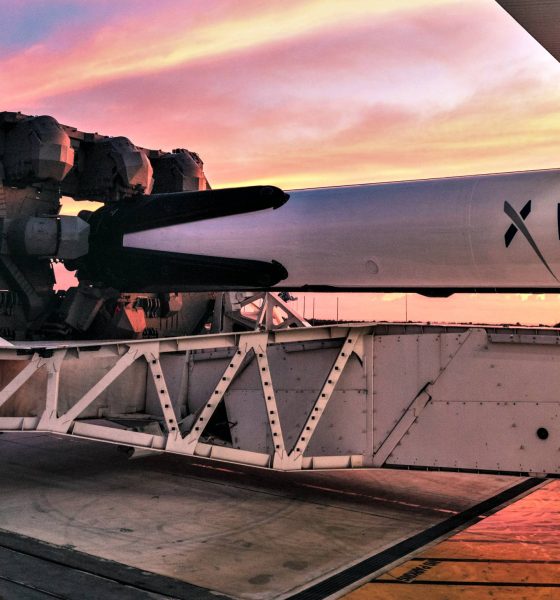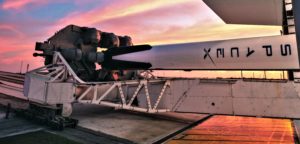

News
SpaceX’s Crew Dragon settles on Feb 9 launch debut as Falcon 9 nears static fire
Update: NASASpaceflight.com is reporting that ISS planning documents suggest that Crew Dragon’s first launch has slipped into the second half of February, perhaps February 16th.
In the midst of several confusing delays, schedule updates, and official statements, the orbital debut of SpaceX’s Crew Dragon spacecraft has made its way onto the Eastern range’s planning schedule for the first time, placing Falcon 9 B1051’s static fire and Crew Dragons launch no earlier than (NET) January 23rd and February 9th, respectively.
As the brand new spacecraft’s first attempted trip to orbit, the demonstration mission (Demo-1/DM-1) will be performed without crew aboard, allowing SpaceX and NASA an opportunity to fully verify performance and explore Crew Dragon’s capabilities without risking the lives of the astronauts that will step inside a nearly identical vehicle as early as June or July.
Obviously preliminary, but the Eastern Range is now showing the Static Fire for the DM-1 mission's Falcon 9 (B1051.1) as NET January 23, (and still showing NET February 9 as the launch date). As always, but especially this one, all very much subject to change. pic.twitter.com/EWOEpbpI9o
— NSF – NASASpaceflight.com (@NASASpaceflight) January 17, 2019
The US government has been shut down for more than four weeks as a consequence of the inability of elected representatives to pass and sign a funding bill, now the longest shutdown in the country’s history. As a result, more than 95% of NASA’s workforce has been furloughed, leaving around 800 people left working (without pay) across the agency in positions or groups deemed absolutely essential to avoid loss of life or property damage.
How NASA defines “essential” is unknown but it seemed improbable that the Commercial Crew Program – around six months away from actually launching astronauts and presently marked by NASA’s attempts to complete reams of approval and certification paperwork – would fall under that extremely narrow umbrella. Delays to Crew launches are unlikely to harm hardware or directly risk harm to astronauts, although a very tenuous case could be made that delays to the program now would snowball and cause the debut of operational crewed launches to slip so far into 2019 (or even 2020) that NASA could lose assured access to the International Space Station (ISS) for several months. Again, there is no obvious way that a slip like that would actually increase the risk to life or limb for astronauts and hardware/infrastructure.
Apparently, Demo-1 and 2 don't need FAA launch licenses (under auspices of NASA, like TESS launch. Post-certification missions will require FAA license, like CRS flights today
— Irene Klotz (@Free_Space) January 16, 2019
Despite the logical improbability that NASA’s Commercial Crew Program (CCP) would – at this point in time – remain operating at full capacity during an extended government shutdown, NASA provided a statement to The Atlantic earlier this week more or less implying that CCP was deemed essential and has continued to operate for the last several weeks. There is certainly some wiggle room in NASA spokesman Bob Jacobs’ comments, enough to make it ambiguous if they are primarily PR spin, frank honesty, or something in between.
A SpaceX spokesperson added [paraphrased by The Atlantic] that “if NASA made the call, the company would carry out the uncrewed [DM-1] launch”, a tactical nonanswer that redirects the impetus to NASA. It’s not clear if the people at NASA that would ‘make the call’ to launch are furloughed or not – they certainly would not be essential in the sense described by NASA’s own overview of the current shutdown’s impact. Originally targeting a launch sometime in mid to late January, an official NASA update posted on January 10th showed that Crew Dragon’s first launch had slipped into February (on the launch range for February 9th).
- DM-1 and Falcon 9 were greeted by an extraordinary – albeit mildly bittersweet – dawn during their first-ever trip out to Pad 39A. (SpaceX)
- The integrated DM-1 Crew Dragon ‘stack’ rolled out to Pad 39A for the first time in the first few days of 2019. (SpaceX)
- Falcon 9 B1051 and Crew Dragon vertical at Pad 39A. (SpaceX)
- Crew Dragon shows off its conformal (i.e. curved) solar array while connected to SpaceX’s sleek Crew Access Arm (CAA). (SpaceX)
- DM-2 astronauts Bob Behnken and Doug Hurley train for their first flight in Crew Dragon. (NASA)
“NASA and SpaceX are now targeting no earlier than February for the launch of Demo-1 to complete hardware testing and joint reviews.” – NASA, 01/10/2019
“Hardware testing” likely refers to the need for Falcon 9 to complete a static fire at Pad 39A, a test now scheduled for January 23rd. It’s ambiguous whether SpaceX can actually perform a static fire test – a complete launch rehearsal involving full propellant loads and the ignition of all nine Merlin 1D engines – at Kennedy Space Center, a NASA operated with federal funding that does not currently exist. Although the Air Force-helmed range is operating at a normal capacity, KSC must still perform a number of basic tasks ranging from infrastructure maintenance to roadblock setup to allow a static fire test – let alone a launch – to occur. I
f SpaceX completes its NET January 23rd static fire with no problems, then it would appear to be the case that some sort of SpaceX-side delay – perhaps augmented or slowed down by NASA operating at 5% capacity – caused the slip from mid-January to mid-February. Stay tuned to find out!

Elon Musk
Starlink passes 9 million active customers just weeks after hitting 8 million
The milestone highlights the accelerating growth of Starlink, which has now been adding over 20,000 new users per day.

SpaceX’s Starlink satellite internet service has continued its rapid global expansion, surpassing 9 million active customers just weeks after crossing the 8 million mark.
The milestone highlights the accelerating growth of Starlink, which has now been adding over 20,000 new users per day.
9 million customers
In a post on X, SpaceX stated that Starlink now serves over 9 million active users across 155 countries, territories, and markets. The company reached 8 million customers in early November, meaning it added roughly 1 million subscribers in under seven weeks, or about 21,275 new users on average per day.
“Starlink is connecting more than 9M active customers with high-speed internet across 155 countries, territories, and many other markets,” Starlink wrote in a post on its official X account. SpaceX President Gwynne Shotwell also celebrated the milestone on X. “A huge thank you to all of our customers and congrats to the Starlink team for such an incredible product,” she wrote.
That growth rate reflects both rising demand for broadband in underserved regions and Starlink’s expanding satellite constellation, which now includes more than 9,000 low-Earth-orbit satellites designed to deliver high-speed, low-latency internet worldwide.
Starlink’s momentum
Starlink’s momentum has been building up. SpaceX reported 4.6 million Starlink customers in December 2024, followed by 7 million by August 2025, and 8 million customers in November. Independent data also suggests Starlink usage is rising sharply, with Cloudflare reporting that global web traffic from Starlink users more than doubled in 2025, as noted in an Insider report.
Starlink’s momentum is increasingly tied to SpaceX’s broader financial outlook. Elon Musk has said the satellite network is “by far” the company’s largest revenue driver, and reports suggest SpaceX may be positioning itself for an initial public offering as soon as next year, with valuations estimated as high as $1.5 trillion. Musk has also suggested in the past that Starlink could have its own IPO in the future.
News
NVIDIA Director of Robotics: Tesla FSD v14 is the first AI to pass the “Physical Turing Test”
After testing FSD v14, Fan stated that his experience with FSD felt magical at first, but it soon started to feel like a routine.

NVIDIA Director of Robotics Jim Fan has praised Tesla’s Full Self-Driving (Supervised) v14 as the first AI to pass what he described as a “Physical Turing Test.”
After testing FSD v14, Fan stated that his experience with FSD felt magical at first, but it soon started to feel like a routine. And just like smartphones today, removing it now would “actively hurt.”
Jim Fan’s hands-on FSD v14 impressions
Fan, a leading researcher in embodied AI who is currently solving Physical AI at NVIDIA and spearheading the company’s Project GR00T initiative, noted that he actually was late to the Tesla game. He was, however, one of the first to try out FSD v14.
“I was very late to own a Tesla but among the earliest to try out FSD v14. It’s perhaps the first time I experience an AI that passes the Physical Turing Test: after a long day at work, you press a button, lay back, and couldn’t tell if a neural net or a human drove you home,” Fan wrote in a post on X.
Fan added: “Despite knowing exactly how robot learning works, I still find it magical watching the steering wheel turn by itself. First it feels surreal, next it becomes routine. Then, like the smartphone, taking it away actively hurts. This is how humanity gets rewired and glued to god-like technologies.”
The Physical Turing Test
The original Turing Test was conceived by Alan Turing in 1950, and it was aimed at determining if a machine could exhibit behavior that is equivalent to or indistinguishable from a human. By focusing on text-based conversations, the original Turing Test set a high bar for natural language processing and machine learning.
This test has been passed by today’s large language models. However, the capability to converse in a humanlike manner is a completely different challenge from performing real-world problem-solving or physical interactions. Thus, Fan introduced the Physical Turing Test, which challenges AI systems to demonstrate intelligence through physical actions.
Based on Fan’s comments, Tesla has demonstrated these intelligent physical actions with FSD v14. Elon Musk agreed with the NVIDIA executive, stating in a post on X that with FSD v14, “you can sense the sentience maturing.” Musk also praised Tesla AI, calling it the best “real-world AI” today.
News
Tesla AI team burns the Christmas midnight oil by releasing FSD v14.2.2.1
The update was released just a day after FSD v14.2.2 started rolling out to customers.

Tesla is burning the midnight oil this Christmas, with the Tesla AI team quietly rolling out Full Self-Driving (Supervised) v14.2.2.1 just a day after FSD v14.2.2 started rolling out to customers.
Tesla owner shares insights on FSD v14.2.2.1
Longtime Tesla owner and FSD tester @BLKMDL3 shared some insights following several drives with FSD v14.2.2.1 in rainy Los Angeles conditions with standing water and faded lane lines. He reported zero steering hesitation or stutter, confident lane changes, and maneuvers executed with precision that evoked the performance of Tesla’s driverless Robotaxis in Austin.
Parking performance impressed, with most spots nailed perfectly, including tight, sharp turns, in single attempts without shaky steering. One minor offset happened only due to another vehicle that was parked over the line, which FSD accommodated by a few extra inches. In rain that typically erases road markings, FSD visualized lanes and turn lines better than humans, positioning itself flawlessly when entering new streets as well.
“Took it up a dark, wet, and twisty canyon road up and down the hill tonight and it went very well as to be expected. Stayed centered in the lane, kept speed well and gives a confidence inspiring steering feel where it handles these curvy roads better than the majority of human drivers,” the Tesla owner wrote in a post on X.
Tesla’s FSD v14.2.2 update
Just a day before FSD v14.2.2.1’s release, Tesla rolled out FSD v14.2.2, which was focused on smoother real-world performance, better obstacle awareness, and precise end-of-trip routing. According to the update’s release notes, FSD v14.2.2 upgrades the vision encoder neural network with higher resolution features, enhancing detection of emergency vehicles, road obstacles, and human gestures.
New Arrival Options also allowed users to select preferred drop-off styles, such as Parking Lot, Street, Driveway, Parking Garage, or Curbside, with the navigation pin automatically adjusting to the ideal spot. Other refinements include pulling over for emergency vehicles, real-time vision-based detours for blocked roads, improved gate and debris handling, and Speed Profiles for customized driving styles.













